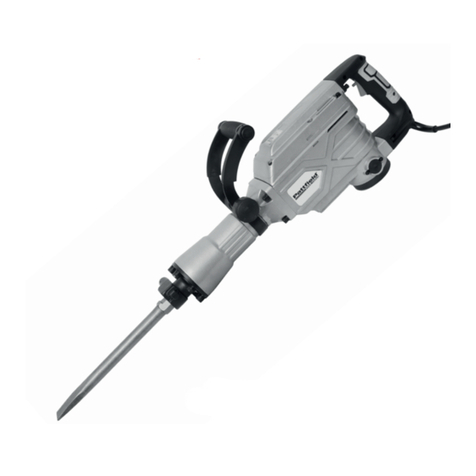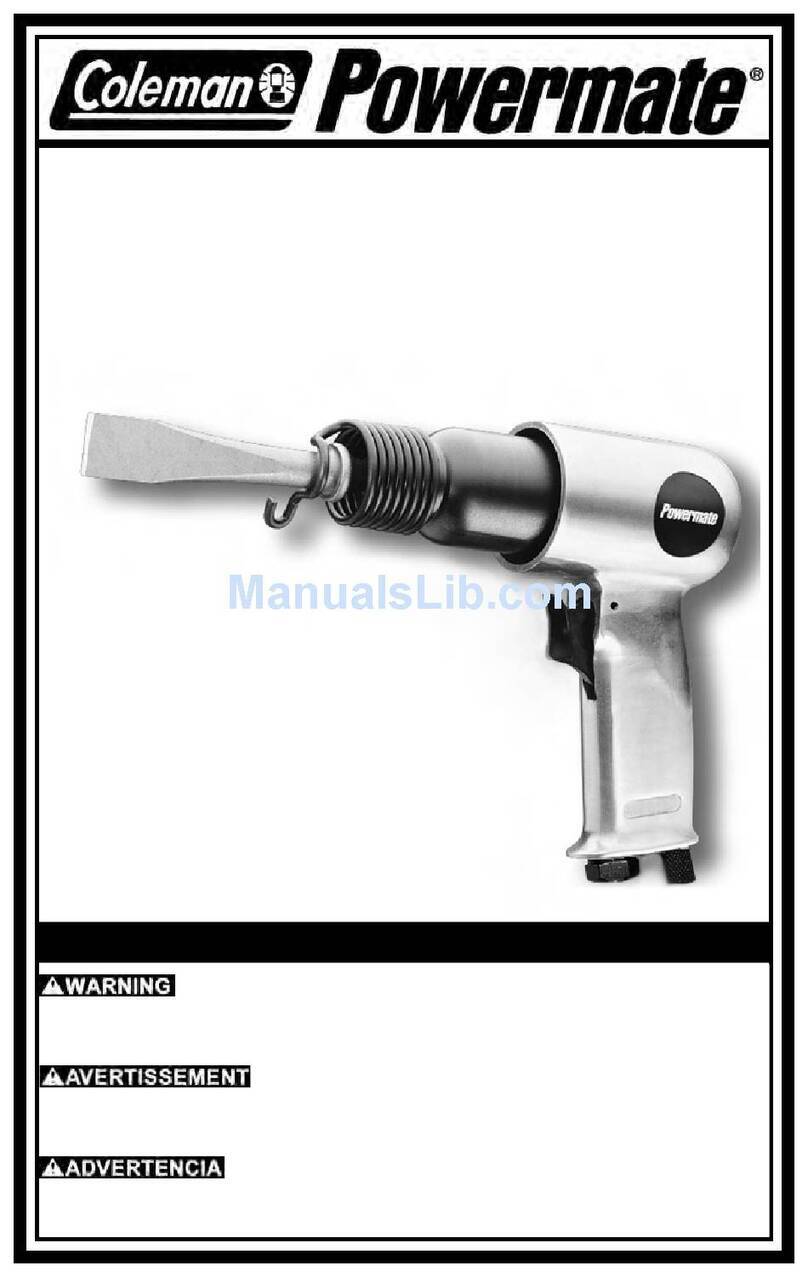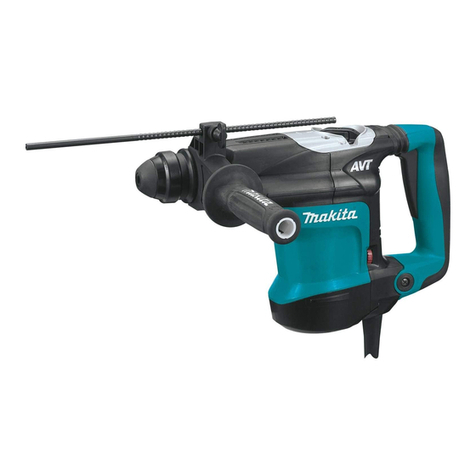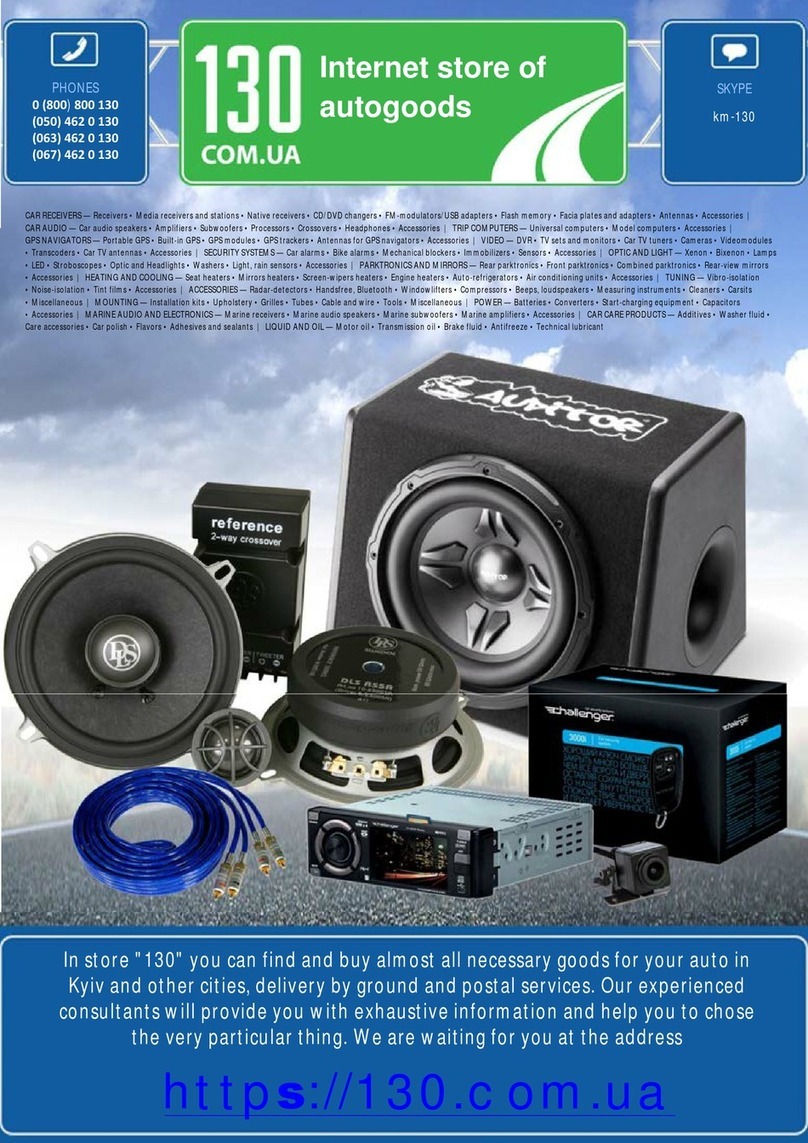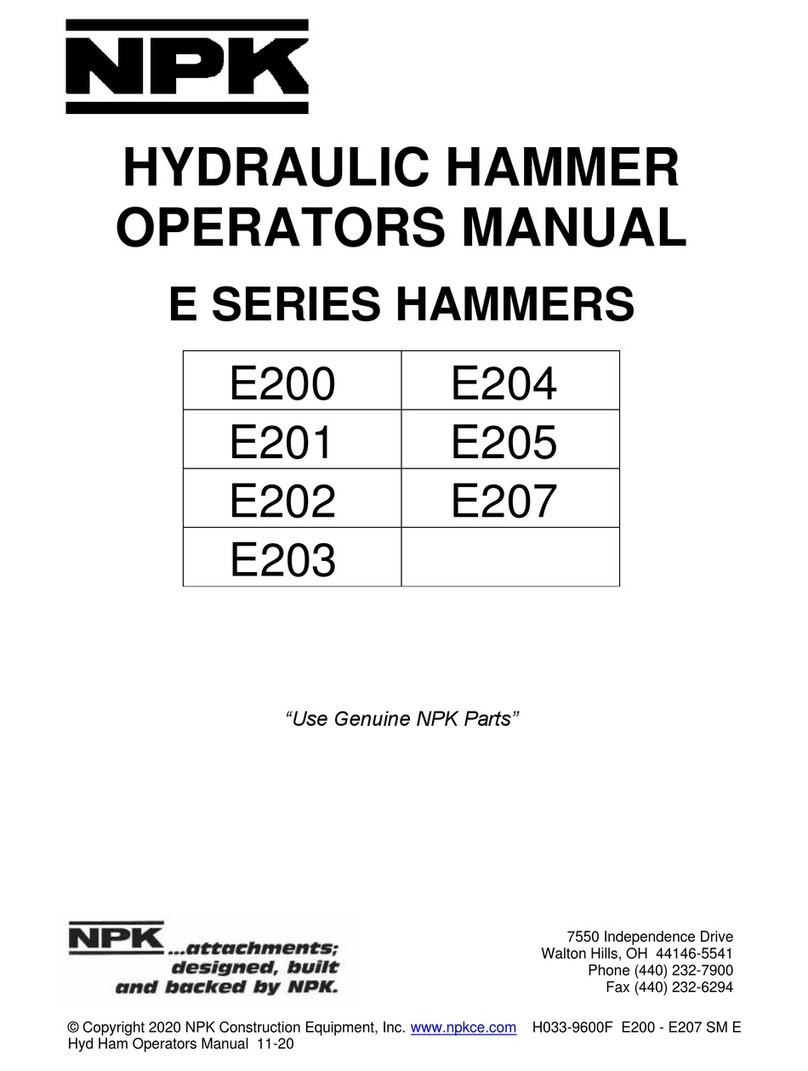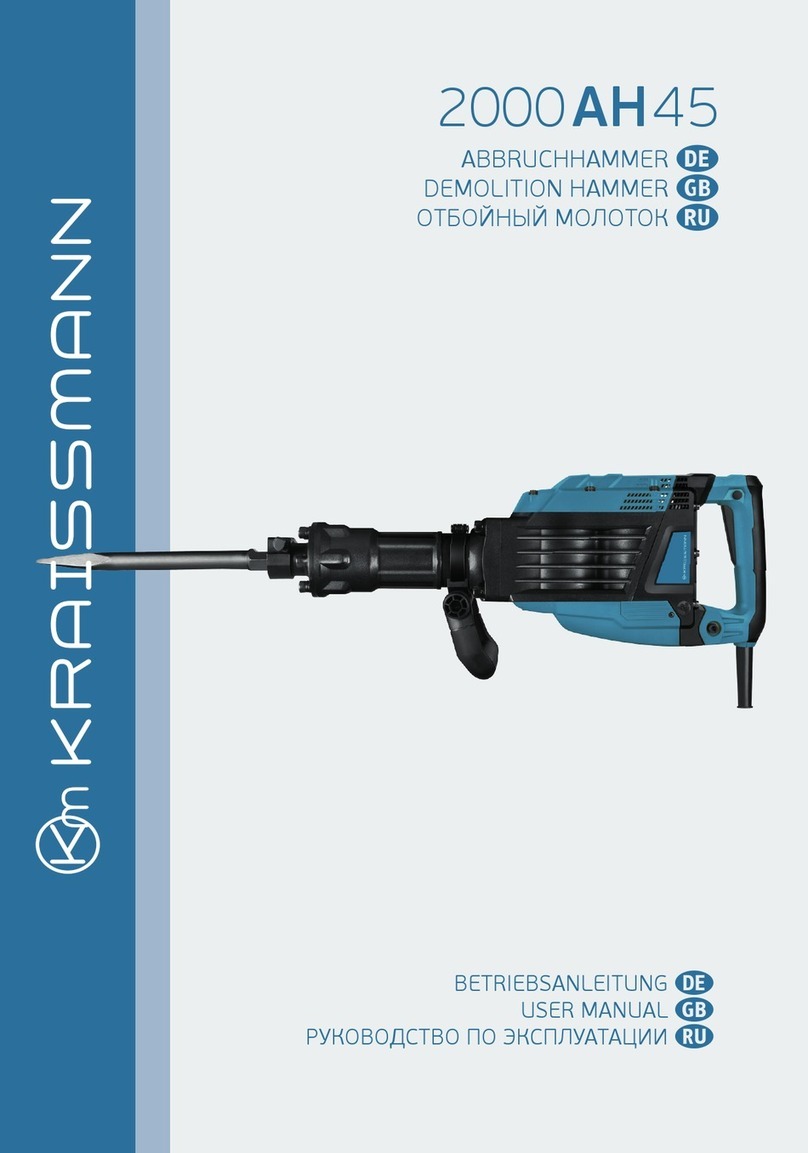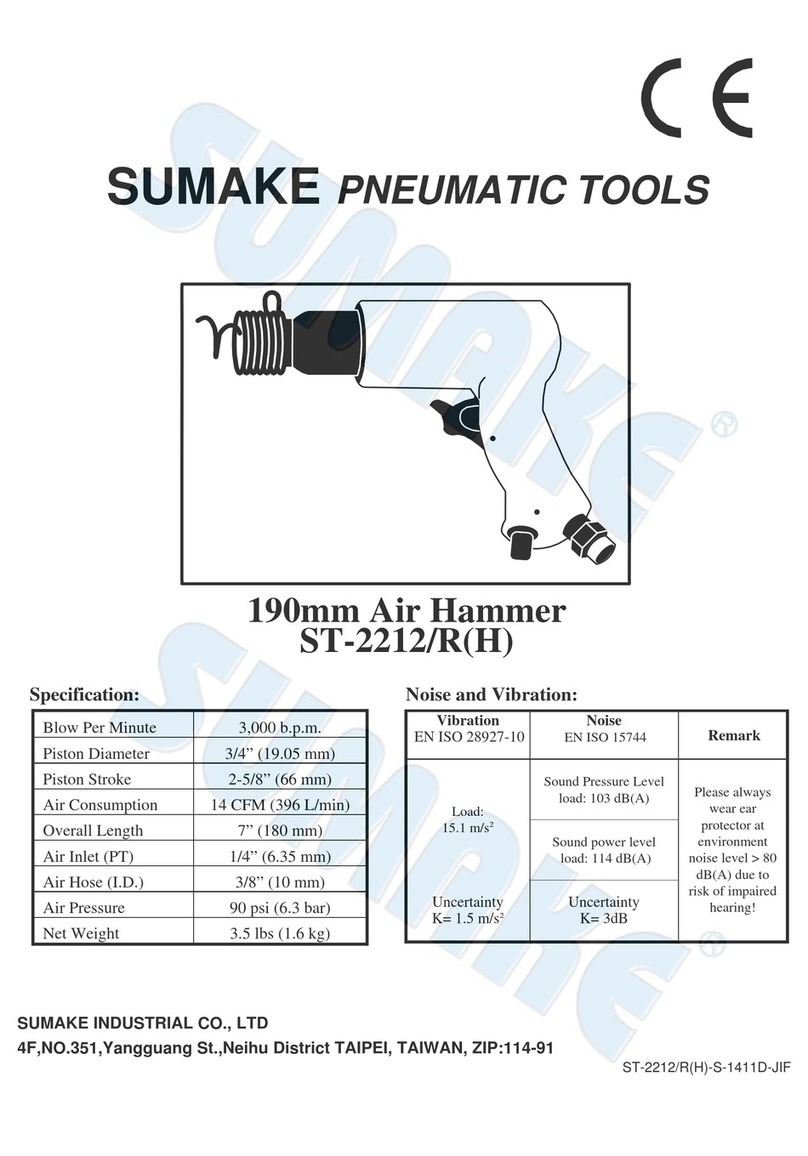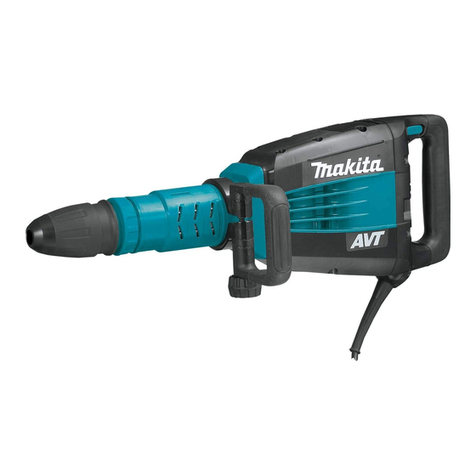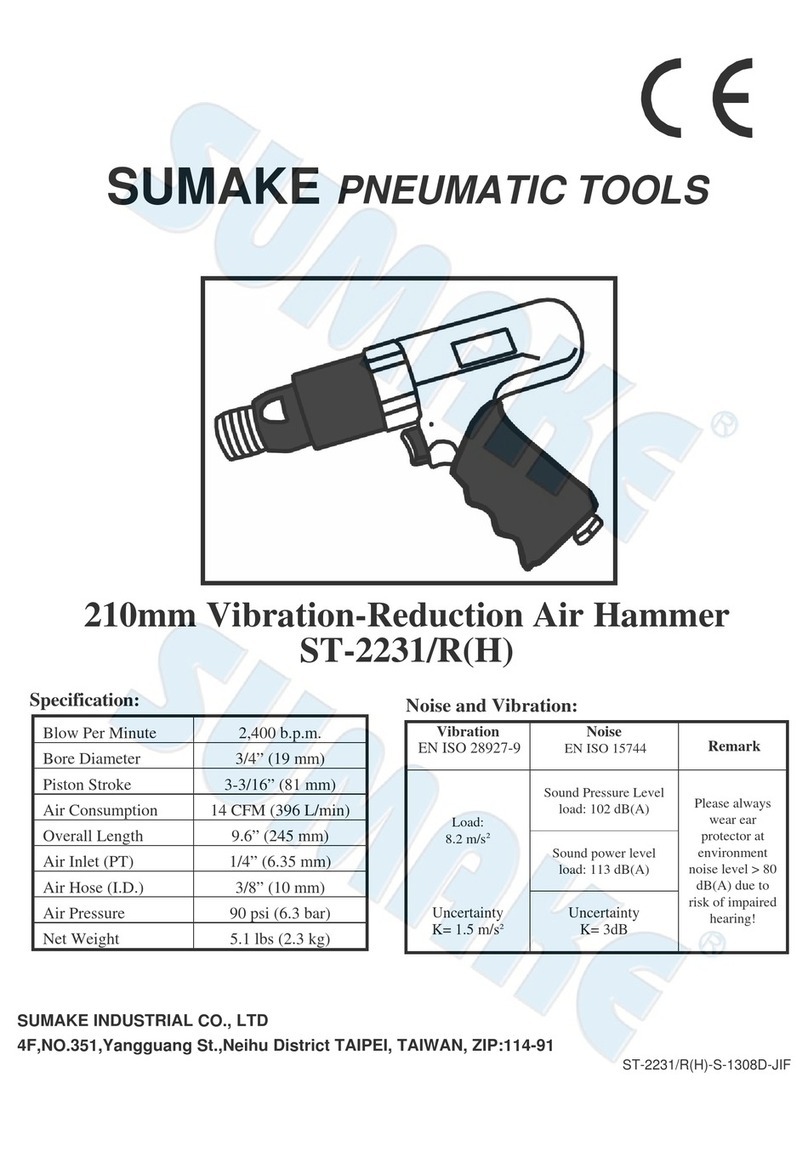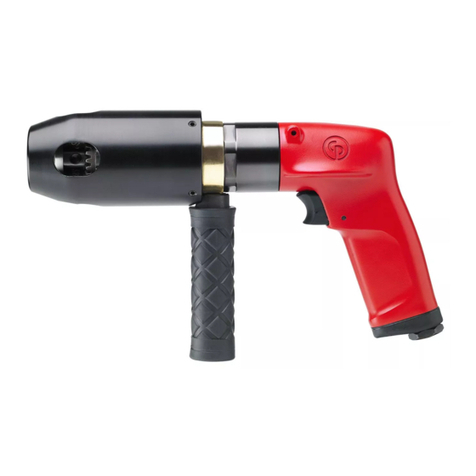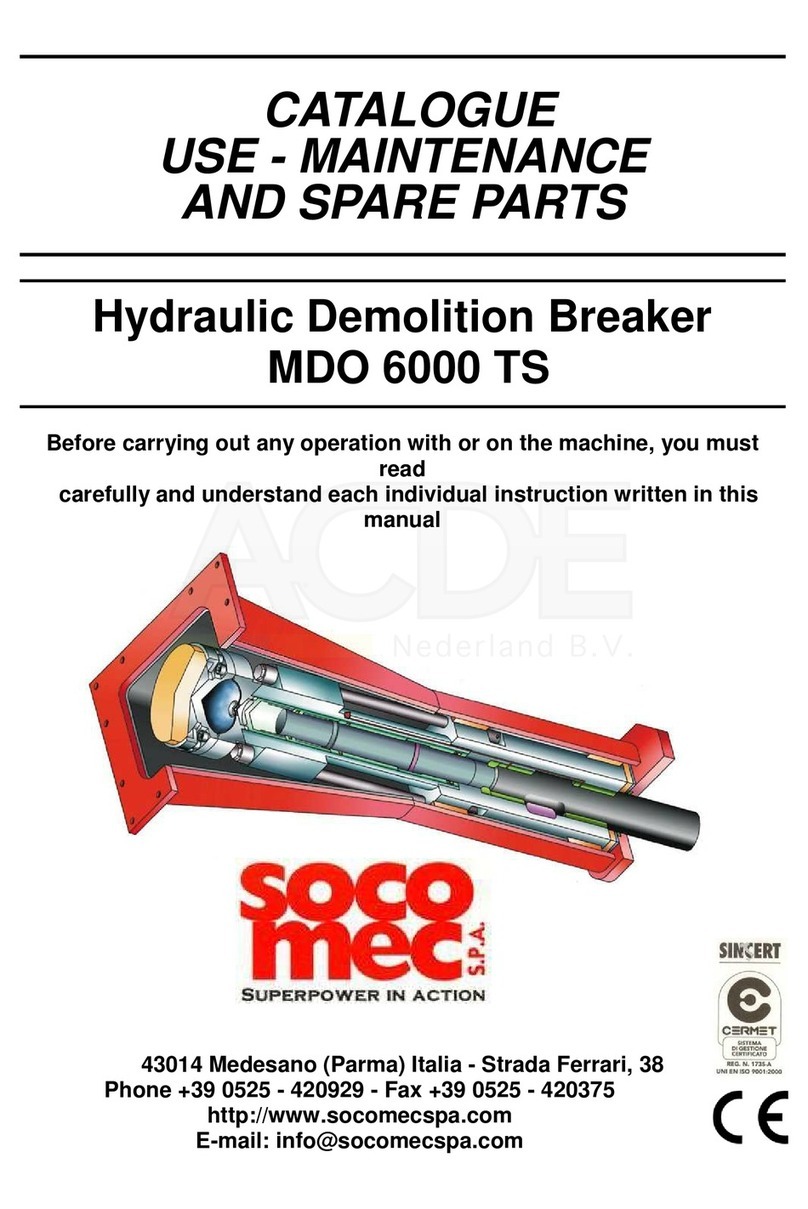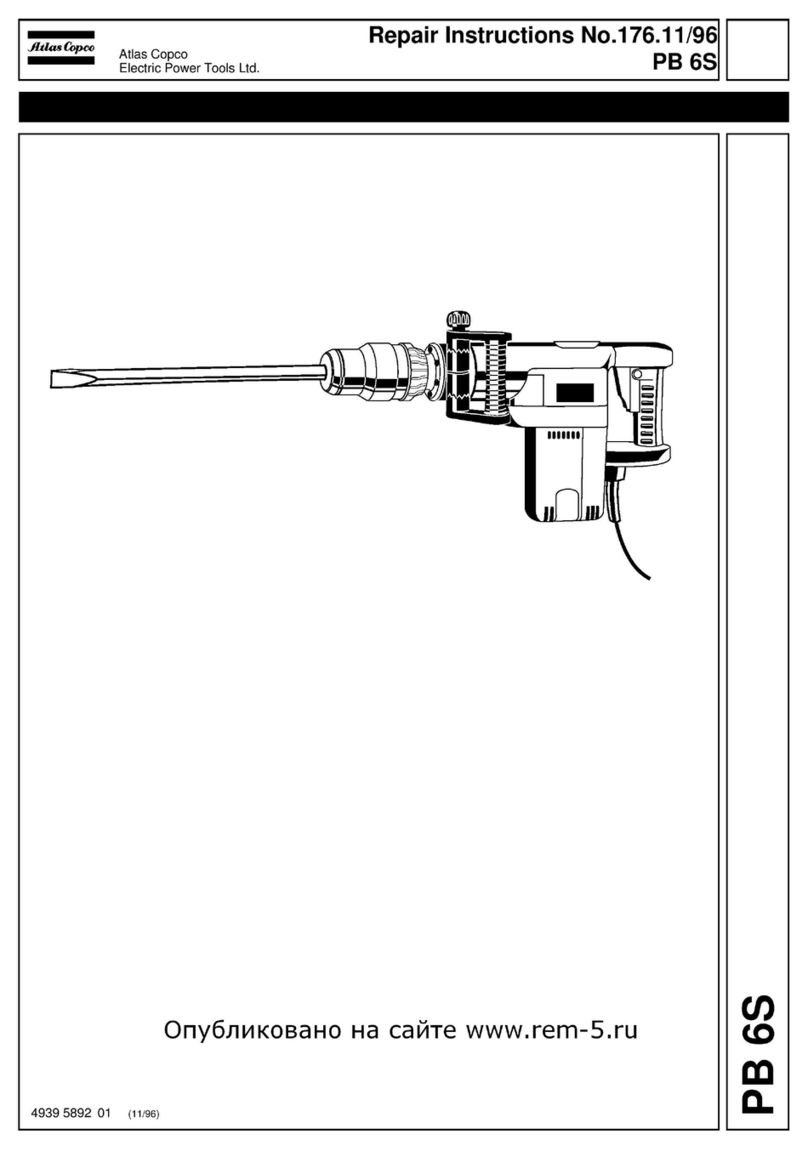
- 5 -
CARRIER MACHINE COMPATIBILITY
These carrier weight ranges are intended as a guideline only. Other factors, such as
stick length, counterweights, undercarriage, etc., must be taken into consideration.
Mounting a HAMMER that is too heavy for the carrier machine
can be dangerous and damage the machine. Verify carrier
stability with hammer before transport or operation.
Mounting a HAMMER that is too small for the carrier machine can damage the
HAMMER, cause tool breakage and void Warranties. Please consult NPK Engineering
for specific detailed information.
CARRIER WEIGHT lbs. (kg)
HAMMER MOUNTING RECOMMENDED RANGE
MODEL STYLE (lb) (kg)
E200 Excavator 2,200 - 4,400 1,000 - 2,000
Skid Steer 2,400 - 3,500 1,100 - 1,600
E201 Excavator 2,800 - 5,500 1,300 - 2,500
Skid Steer 3,000 - 5,500 1,350 - 2,500
E202 Excavator 5,400 - 9,000 2,450 - 4,100
Skid Steer 5,000 - 7,500 2,300 - 3,400
E203 Excavator 6,600 - 12,000 3,000 - 5,500
Skid Steer 6,000 –9,000 2,700 - 4,100
E204 Excavator 8,800 - 15,000 4,000 - 7,000
Skid Steer 8,000 - 14,000 3,600 - 6,400
Backhoe 9,000 - 15,000 4,100 – 7,000
E205 Excavator 13,000 - 22,000 6,000 - 10,000
Backhoe 13,000 - 20,000 6,000 - 9,000
E207 Excavator 22,000 - 31,000 10,000 - 14,000
Backhoe 20,000 - 25,000 9,000 - 11,500
*Specifications subject to change without notice.
